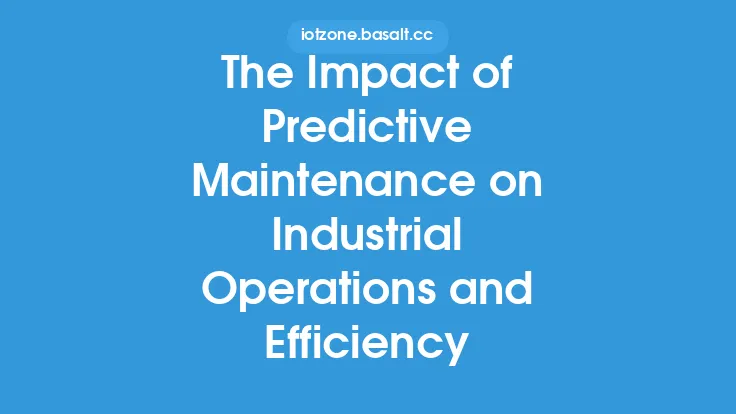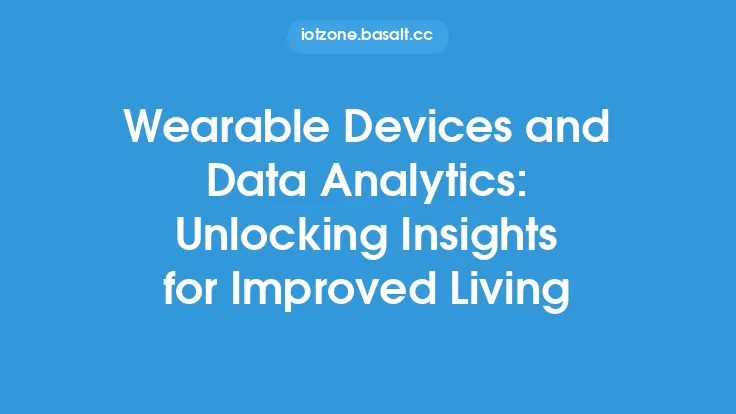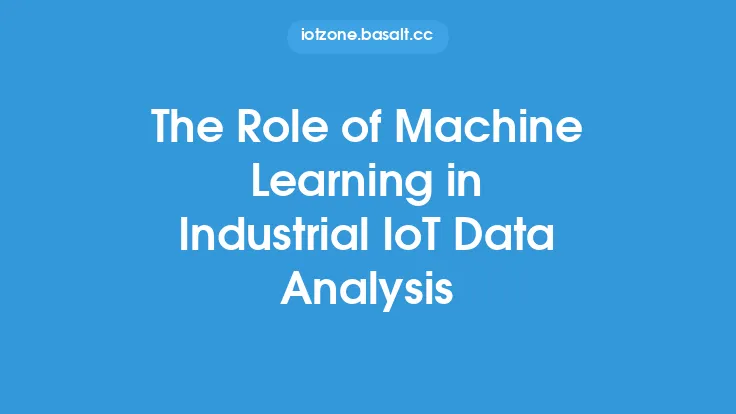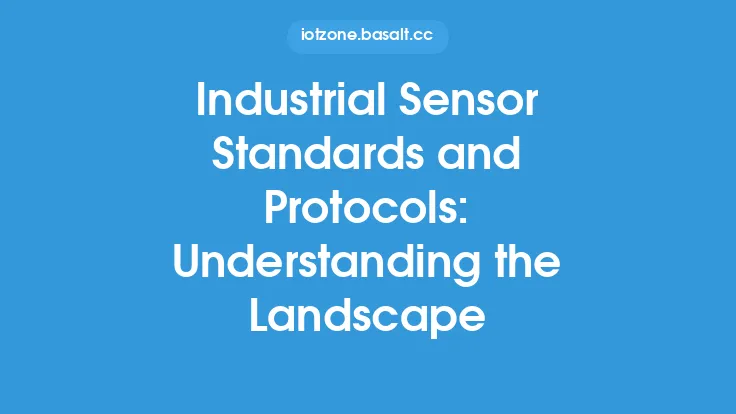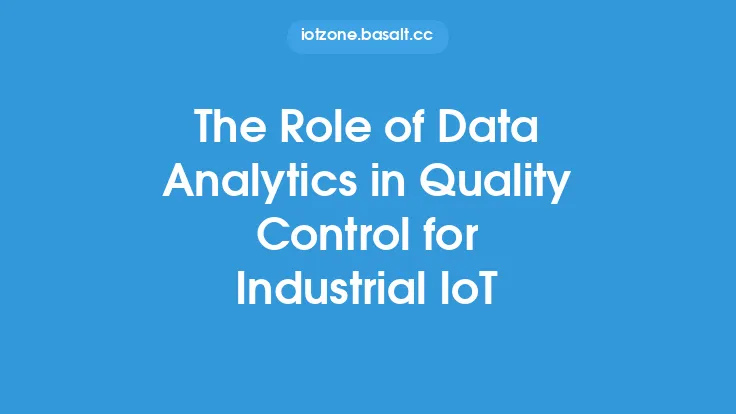The increasing use of industrial sensors and devices in various industries has led to a massive amount of data being generated. This data, if analyzed properly, can provide valuable insights into the operations of a plant or factory, helping to improve efficiency, reduce costs, and increase productivity. Industrial sensor data analysis is the process of examining and interpreting the data generated by these sensors to extract meaningful information. This process involves several steps, including data collection, data preprocessing, feature extraction, and data visualization.
Introduction to Industrial Sensor Data Analysis
Industrial sensor data analysis is a crucial aspect of industrial IoT, as it enables companies to make data-driven decisions and optimize their operations. The data generated by industrial sensors can be used to monitor equipment performance, detect anomalies, and predict maintenance needs. By analyzing this data, companies can identify areas of inefficiency and implement changes to improve overall performance. Industrial sensor data analysis can be applied to various industries, including manufacturing, oil and gas, and power generation.
Data Collection and Preprocessing
The first step in industrial sensor data analysis is data collection. This involves gathering data from various sensors and devices, such as temperature sensors, pressure sensors, and vibration sensors. The data can be collected using various methods, including wired or wireless communication protocols. Once the data is collected, it needs to be preprocessed to remove any errors or inconsistencies. This includes handling missing values, removing outliers, and normalizing the data. Data preprocessing is a critical step, as it ensures that the data is accurate and reliable.
Feature Extraction and Selection
After preprocessing the data, the next step is feature extraction and selection. This involves identifying the most relevant features or variables that are related to the problem being analyzed. Feature extraction can be done using various techniques, such as time-domain analysis, frequency-domain analysis, and wavelet analysis. The extracted features can then be selected based on their relevance and importance. Feature selection is a critical step, as it helps to reduce the dimensionality of the data and improve the accuracy of the analysis.
Data Analysis Techniques
There are various data analysis techniques that can be used for industrial sensor data analysis, including statistical analysis, machine learning, and deep learning. Statistical analysis involves using statistical methods, such as regression analysis and hypothesis testing, to identify trends and patterns in the data. Machine learning involves using algorithms, such as decision trees and random forests, to build models that can predict outcomes based on the data. Deep learning involves using neural networks to build complex models that can learn patterns in the data.
Machine Learning for Industrial Sensor Data Analysis
Machine learning is a powerful tool for industrial sensor data analysis, as it can be used to build models that can predict outcomes based on the data. Some common machine learning algorithms used for industrial sensor data analysis include supervised learning, unsupervised learning, and reinforcement learning. Supervised learning involves using labeled data to train a model, while unsupervised learning involves using unlabeled data to identify patterns. Reinforcement learning involves using feedback to train a model. Machine learning can be used for various applications, including predictive maintenance, quality control, and process optimization.
Data Visualization and Interpretation
The final step in industrial sensor data analysis is data visualization and interpretation. This involves presenting the results of the analysis in a clear and concise manner, using various visualization tools, such as plots, charts, and graphs. Data visualization helps to identify trends and patterns in the data, and can be used to communicate the results of the analysis to stakeholders. Data interpretation involves drawing conclusions based on the results of the analysis, and identifying areas for improvement.
Challenges and Limitations
Industrial sensor data analysis is not without its challenges and limitations. Some of the common challenges include data quality issues, such as missing values and outliers, and the complexity of the data, which can make it difficult to analyze. Other challenges include the lack of standardization in data formats and communication protocols, and the need for specialized skills and expertise to perform the analysis. Despite these challenges, industrial sensor data analysis has the potential to provide significant benefits, including improved efficiency, reduced costs, and increased productivity.
Best Practices for Industrial Sensor Data Analysis
To get the most out of industrial sensor data analysis, there are several best practices that should be followed. These include ensuring data quality, using the right analysis techniques, and visualizing the results in a clear and concise manner. It is also important to have a clear understanding of the problem being analyzed, and to identify the most relevant features or variables. Additionally, it is important to consider the scalability and flexibility of the analysis, and to ensure that the results are actionable and can be used to drive business decisions.
Real-World Applications
Industrial sensor data analysis has various real-world applications, including predictive maintenance, quality control, and process optimization. Predictive maintenance involves using data analysis to predict when equipment is likely to fail, and scheduling maintenance accordingly. Quality control involves using data analysis to monitor product quality, and identifying areas for improvement. Process optimization involves using data analysis to optimize process parameters, and improve overall efficiency. These applications can help companies to improve their operations, reduce costs, and increase productivity.
Conclusion
Industrial sensor data analysis is a powerful tool for improving operations and driving business decisions. By analyzing the data generated by industrial sensors, companies can gain valuable insights into their operations, and identify areas for improvement. While there are challenges and limitations to industrial sensor data analysis, the benefits can be significant, including improved efficiency, reduced costs, and increased productivity. By following best practices, and using the right analysis techniques, companies can unlock the full potential of their industrial sensor data, and drive business success.

